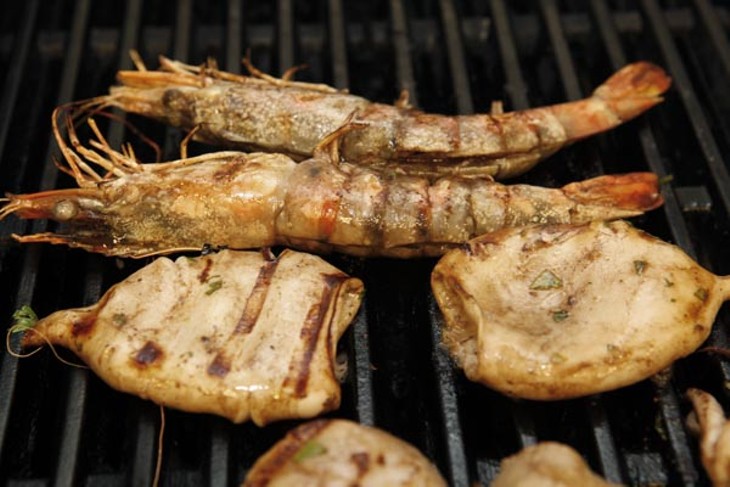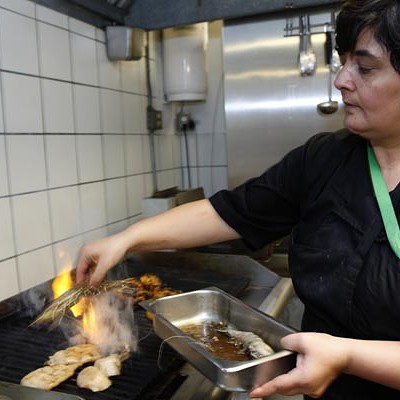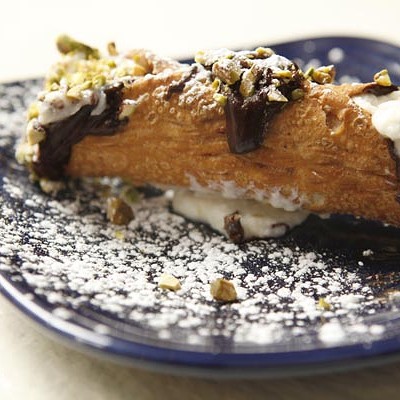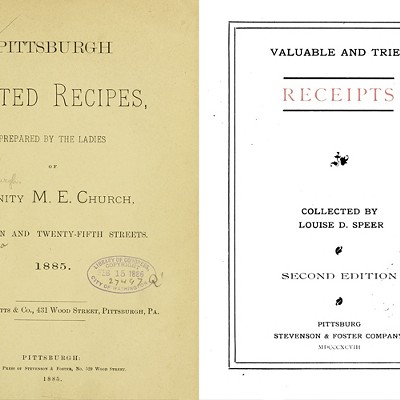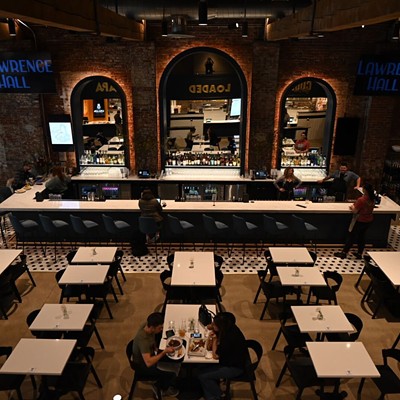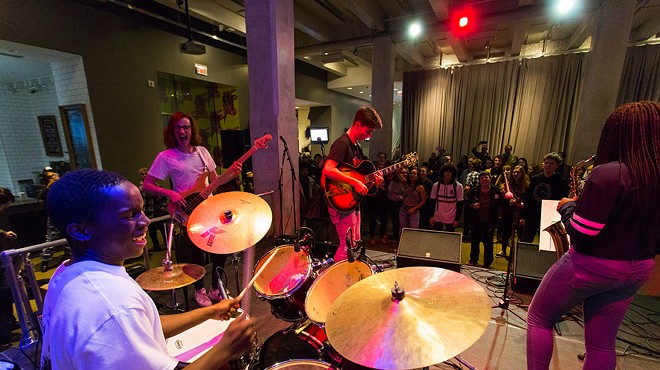We do not know why it is that Tuscany often seems to hog all the credit — in American popular culture, at least — for everything that is desirable about Italy: the saturated sunlight, the romantically ruined villas, the ancient olive orchards and the delicious Mediterranean diet. Certainly, Tuscany's fame is justly deserved, but those who look beyond this region will discover the true breadth and depth of Italian culture. And what is at the center of Italian culture but food?
Each Italian region has its own signature cuisine, and each brings something different to the fore. La Cucina Flegrea was one of the first Pittsburgh restaurants to offer regional Italian specialties in place of a wholly assimilated, spaghetti-and-meatballs Italian-American menu, or a generic "Northern Italian" white tablecloth and dark red sauce. It serves the lesser-known cuisine of the Campi Flegrei region outside of Naples. This dramatic area of volcanic cones, craters and caldera is the home of an important archaeological heritage as well as a unique cuisine.
Anna Fevola, a native of the region, opened the original La Cucina Flegrea 15 years ago in Squirrel Hill. Last year, she moved the restaurant downtown to Market Square, bringing the fresh seafood, cured meats, vegetables and pastas of the Campi Flegrei — and her legendary hospitality — with it. The new space, on the second floor of a building between the square and Fifth Avenue, is too large and formally appointed to be intimate, but conveys the feeling of an Italian coastal town with one striking design move: a large mural of one of the region's signature harbors, painted on fabric panels and lit from behind so that it glows subtly, like stained glass. The new Cucina also has a bar and a lounge with a sofa and club chairs, enabling it to cater to the after-work cocktail crowd as well as dinner and, now, lunch.
We began with bruschette assortite, perfect little toast rounds brushed with olive oil and topped with an abundance of fresh, bright red, juicy tomatoes, basil and olives: a simple dish, done well.
Much less rewarding was a daily-special soup of cannellini beans and escarole that seemed to promise a unique twist on Angelique's perennial favorite, beans and greens. Alas, both main ingredients had been cooked to an undifferentiated mush, losing all flavor in the process. With no detectable seasoning in the broth itself to compensate, even a liberal hand with the table's salt and pepper shakers couldn't rescue this concoction.
Not surprisingly, seafood comprises much of the coastal Campi Flegrei diet and La Cucina Flegrea's menu. The small town of Torregaveta offers up a rigatoni dish that transforms a typical pasta with seafood into a hearty, almost rustic dish with zucchini and grape tomatoes along with clams, mussels and calamari. The seafood was very good, especially the squid, served not as rings but with whole, tender bodies and individual tentacles.
Vegetables and cured meats also play a large part in nourishing a coastal people living far from fertile pastureland. Brilliant purple shreds of radicchio were paired with hefty chunks of prosciutto in a mild cream sauce that was sufficient to coat al dente farfalle without weighing it down. The radicchio had an edge of bitterness that was a bit much for Jason, but suited Angelique just fine as a complement to the salty meat.
Sausage and rapini — a bitter green also known as broccoli rabe and, though leafy, related to the turnip — are a classic pairing in southern Italy, where they are typically served side by side. Here, the classic combination is represented by salsiccia and friarielli, grilled sausage served (curiously) under a bed of rapini. The sausage was in the form of links split and flattened, which allowed a bit more browning of the meat within. But because the sausage was mild, it had difficulty standing up to the assertively bitter flavor of the rapini. Angelique's side of simple, classic penne with a bright tomato sauce was a perfect counterpoint, bursting with fresh, sweet, astringent flavor and seasoned just enough.
Our sojourn in the Campi Flegrei gave us a taste of the excellence that characterizes the cuisine of this lesser-known Italian region. While some dishes failed to meet our expectations, it could be hard to tease apart whether this was because of an off night at the restaurant or our own unfamiliarity with the conventions of the cuisine. Whatever the case, we celebrate the fact that the Campi Flegrei continues to represent on the culinary map of Pittsburgh.




